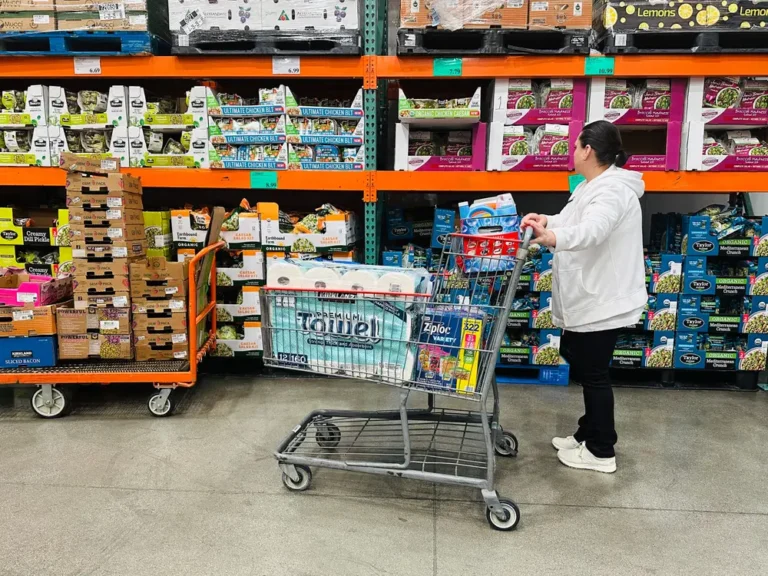An Amazon seller who brings in up to $53,000 in monthly revenue says 20% of her products do 80% of the sales. She shares her biggest product flops and what she’s learned from the failures.

Our experts answer readers’ investing questions and write unbiased product reviews (here’s how we assess investing products). Paid non-client promotion: In some cases, we receive a commission from our partners. Our opinions are always our own.
- E-commerce business owner Shan Shan Fu does up to $53,000 in monthly sales.
- Not all the products she lists on Amazon succeed, though. She’s had a couple of “immediate duds.”
- Failed products have taught her the importance of testing them before buying inventory.
Shan Shan Fu, the owner of an e-commerce business, makes a living by selling products on Amazon.
Insider verified her $53,000 sales in October 2023 by looking at screenshots of her Amazon dashboard.
She began selling face masks during the early days of the Covid-19 pandemic, and the majority of what she sells now is apparel, such as socks and tights.
“Fashion is the most fickle category you can sell in,” she admitted to Insider. “Women return products about 20% of the time.”
Fu decided to branch out beyond fashion and diversify her product offering in 2023. She created a pickleball stuffed animal. “Everybody is obsessed with pickleball right now,” she explained, driving her product decision.
But when she launched on Amazon, it was a “immediate dud,” she said.
The return on ad spend (ROAS), which compares revenue to ad spend, was one specific statistic that pointed to product failure.
“Products that do really well tend to have a 2.0 ROAS,” Fu explained, implying that a brand earns $2 for every $1 spent on advertising. “In contrast, products that perform extremely poorly typically have a ROAS of 1.0 or less.” When I launched the pickleball product, it had an instant ROAS of less than 1.0.”
Fu discovered that she was spending a lot of money to get people to click on the product, but they weren’t buying it once they got to the listing page.
She may eventually sell the inventory and break even, “but I’m definitely not going to make money,” she said.
It wasn’t her first failed product: she launched lingerie in the early days of her e-commerce business, which “didn’t work at all,” she said. The two main issues were sizing and advertising: “Amazon bans lingerie for their advertising, and without Amazon’s advertising platform, it’s very difficult to get any traction on the product.”
Fu estimates that of the 30 or so new products she introduces each year, 20% account for 80% of sales. Most of them end up being what she refers to as “so-so success,” meaning they aren’t a clear winner but are still selling.
“These products are very tricky because they could go both ways: It could slowly grow over time to become a winner or it could slowly go down and become a loser,” she went on to say. At some point, “you have to make a judgment call on whether you want to double down on something that is kind of successful or if you want to let it go.”
Avoiding ‘immediate duds’ by testing the product before launching on Amazon
While product flops are unavoidable in business, there are strategies to help reduce your chances of launching a failed product.
One method is to test your product before submitting it to Amazon, which is a key component of Fu’s strategy. “I kind of got delusional and thought, ‘People like pickleball.'” She skipped this step with the pickleball product. People enjoy plush toys. So I’m going to make a plush pickleball.’ And I was mistaken.”
If she could go back in time, she would have done more product testing before ordering inventory.
There are several approaches to this. To begin, you can solicit feedback from friends and family. On Instagram, you can also create a poll, which Fu prefers to do from her business account. If she is considering launching a new line of tights, she will post two styles and ask her followers to vote on their favorite.
“If you get a large enough sample — 50 people is enough — to say one type is better than the other, your sales will likely reflect that,” Fu said, adding that he also uses the website PickFu to get feedback from real people.
Another way to validate your product before going to Amazon is to sell it on Etsy first, which is usually less expensive and easier for the seller. If she wants to sell socks, she’ll choose 10 to 20 different designs and have them shipped to her apartment, where she’ll photograph them and sell them on Etsy.
She’ll look at click-through rates and conversion rates once they’re on Etsy to see which ones are performing the best. She will then take the most popular designs to Amazon.
Fu isn’t deterred by a failed product or a setback.
“What keeps me going is that it’s really fun,” she said of her own e-commerce venture. “It’s my obsession.” It’s similar to playing a video game, except the points are real. It’s real cash. Every day, I look forward to waking up and reviewing the performance of my products.”
She also keeps herself motivated by networking with and learning from other successful business owners.
“I surround myself with people who are more successful than me,” said Fu, who recently attended the eCommerceFuel conference to network with other successful entrepreneurs. “When I see them make millions and millions of dollars in sales, it inspires me because they’re just like you and me.” Some of them were even younger than I was. There’s no reason why we can’t if they can, so I try to attend these events not only to learn, but also to be inspired.”






